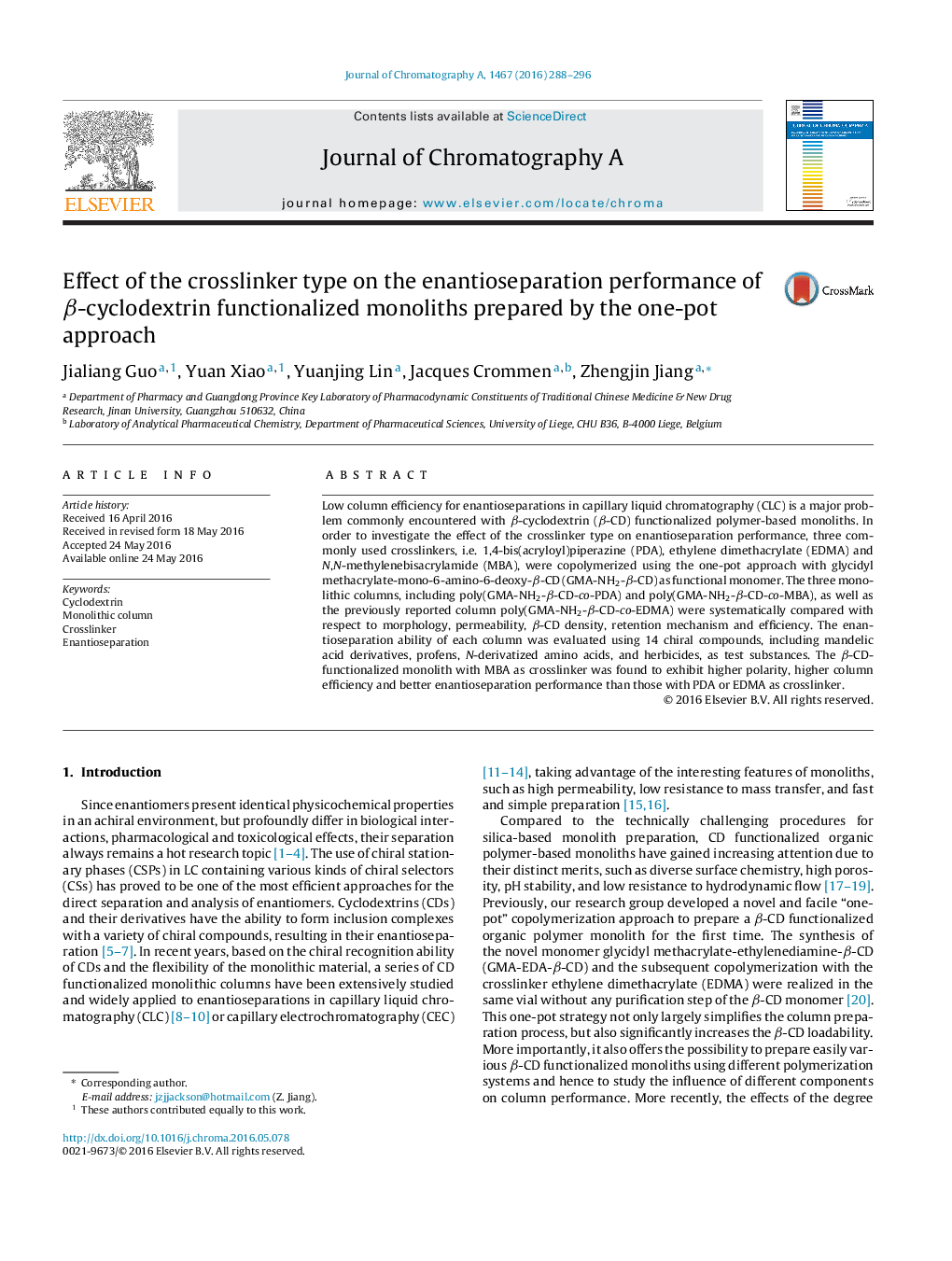| Article ID | Journal | Published Year | Pages | File Type |
|---|---|---|---|---|
| 5135633 | Journal of Chromatography A | 2016 | 9 Pages |
â¢Three NH2-β-CD functionalized monoliths were prepared using different crosslinker.â¢The polarity of NH2-β-CD functionalized monoliths is strongly related to crosslinker type.â¢The enantioseparation performance of β-CD monoliths is related to crosslinker type.
Low column efficiency for enantioseparations in capillary liquid chromatography (CLC) is a major problem commonly encountered with β-cyclodextrin (β-CD) functionalized polymer-based monoliths. In order to investigate the effect of the crosslinker type on enantioseparation performance, three commonly used crosslinkers, i.e. 1,4-bis(acryloyl)piperazine (PDA), ethylene dimethacrylate (EDMA) and N,N-methylenebisacrylamide (MBA), were copolymerized using the one-pot approach with glycidyl methacrylate-mono-6-amino-6-deoxy-β-CD (GMA-NH2-β-CD) as functional monomer. The three monolithic columns, including poly(GMA-NH2-β-CD-co-PDA) and poly(GMA-NH2-β-CD-co-MBA), as well as the previously reported column poly(GMA-NH2-β-CD-co-EDMA) were systematically compared with respect to morphology, permeability, β-CD density, retention mechanism and efficiency. The enantioseparation ability of each column was evaluated using 14 chiral compounds, including mandelic acid derivatives, profens, N-derivatized amino acids, and herbicides, as test substances. The β-CD-functionalized monolith with MBA as crosslinker was found to exhibit higher polarity, higher column efficiency and better enantioseparation performance than those with PDA or EDMA as crosslinker.
